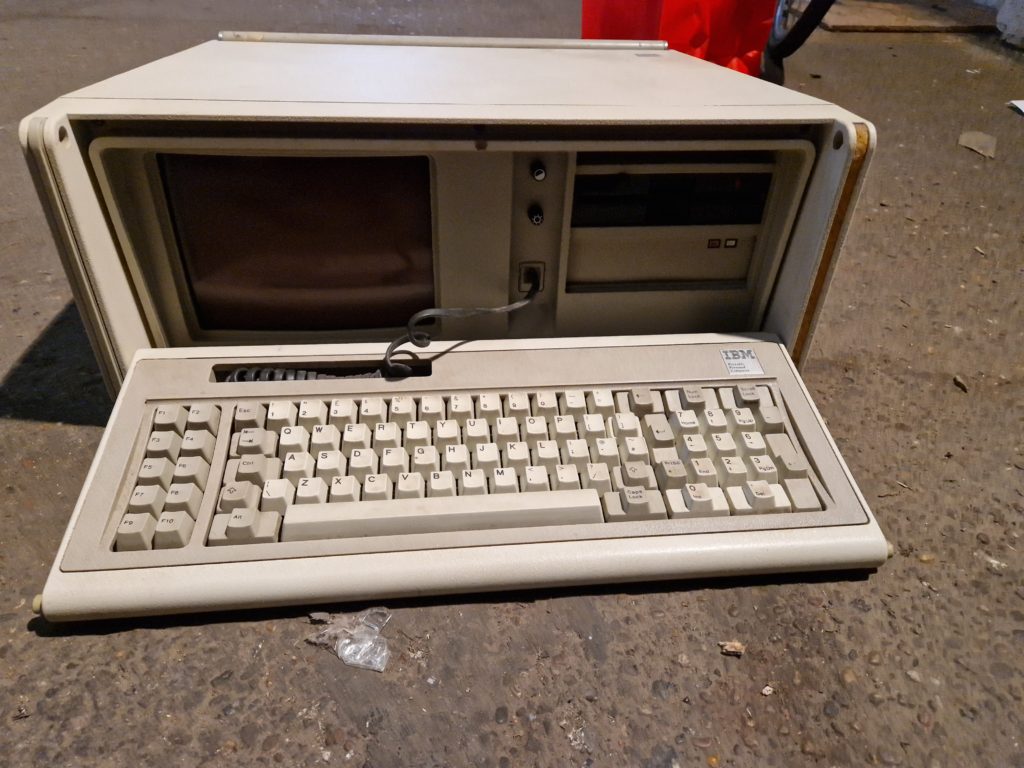
Jeremy and I were going through some old equipment yesterday at a client who is moving offices and we found the IBM Personal Portable Computer from 1984. This isn’t something you see everyday. It has brought back powerful memories to Diana, who was in the first batch of six employees at Ford of Europe to get a PC on her desk at around that time. Hers was the Apple IIe, first produced in 1983, and the earliest spreadsheet program, Visicalc, was written for it. Diana still loves spreadsheets!
The IBM Portable Personal Computer Model 68 was a portable computer that offered advanced features and capabilities for personal and professional use at the time.
The Model 68 had a 16-bit microprocessor, which was the same as the original IBM PC, but with a faster clock speed of 4.77 MHz. The Model 68 had 256 KB of RAM, which could be expanded to 512 KB with an optional memory expansion board.
It had a 5.25-inch floppy disk drive, which could read and write single-sided or double-sided disks with a capacity of 160 KB or 320 KB (Nothing compared to a typical USB memory stick today).
It had a monochrome LCD display, which had a resolution of 640 x 200 pixels and could display 25 lines of text with 80 characters each and it had a detachable keyboard, with 83 keys, including 10 function keys and a numeric keypad.
The Model 68 could run various operating systems, such as MS-DOS, CP/M-86, and UCSD p-System. MS-DOS was the most popular operating system for the IBM PC and compatible computers, and it supported a wide range of applications and utilities. CP/M-86 was an alternative operating system that was compatible with many CP/M programs and devices. UCSD p-System was an operating system that supported the Pascal programming language and allowed the user to create and run portable programs.
The PC was compatible with most IBM PC software and hardware, and could also connect to external devices, such as printers, modems, and monitors. The Model 68 had a parallel port, a serial port, an expansion bus connector, and a video output port. The Model 68 was designed to be easy to carry and operate, weighing 13.6 kg (30 lb) and having a built-in handle and a protective case. The handle could be folded into the case when not in use, and the case can be locked with a key for security.
The Model 68 was ideal for users who needed a powerful and versatile computer that could be used in different locations and environments, such as offices, homes, hotels, or classrooms. Imagine carrying that to work nowadays!
Today we are used to a laptop. But in the 80’s these were the tech at the time and the cost of something like this would be out of most people’s budget. A laptop today is now classed as a disposable item which should be replaced every 3 years or so. More details can be found here.
Martin Mayes – by-line and other articles

